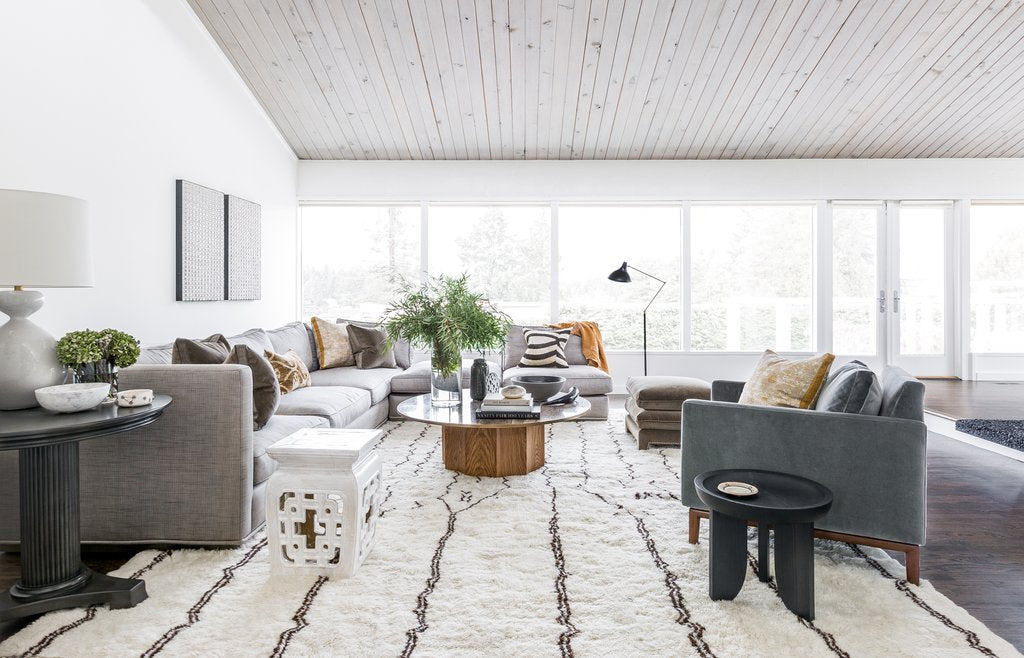Understanding the Weaving Traditions of Moroccan Tribal Rugs
Understanding the Weaving Traditions of Moroccan Tribal Rugs
Rugs have always been a part of almost every home, but most of the time, people take them for granted. But if there’s a piece of rug that deserves your attention, there’s no other choice than Moroccan rugs. You’ve probably heard of them before, but fine Moroccan woven rugs are perfect for giving warmth to your home and offering impressive appeal to almost any room. But what exactly makes these rugs so desirable, and how exactly are they made?
What is a Moroccan Style Rug?

In essence, Moroccan rugs refer to textile floor coverings woven by Morocco’s indigenous traditional people. Its primary material is wool, making it incredibly soft, comfy, and comes with high piles.
The unique orderly patterns of authentic Moroccan rugs and relaxing colors make it different from just about any other type of rug out there. Moroccan rugs range from graphically dense to monochrome, incorporating bright, saturated shades as well as natural, muted tones.
If we are to truly appreciate the culture and artistic value of Moroccan rugs, we need to examine the major elements that make them unique. We can start by looking at the most popular tribal weaving traditions.
Bold Tribal Patterns
Those bold geometric designs you see on Moroccan rugs are reminiscent of the many rural regions of the country, from the Atlas Mountains all the way to the Sahara. In the Azilal region, however, you’ll find the most sought-after, heavily decorated carpets. Azilal rugs depict images of ancestral myths into their textiles using archaic images and symbols. This is due to the fact that they lack a written language, which forced Berber weavers to weave a reflection of their culture into their rugs.
Azilal rugs are known to have unique and intricate patterns made using bold colors. Interestingly, neutral-toned versions have also been made by the locals. In fact, they are more traditionally tribal than the more popular rugs with a red ground.
Brilliant Color Saturation
While Moroccan rugs are known for their magnificent patterns, they’re not all that. Some of the most striking pieces Moroccan style rugs are actually monochrome. While they may look simple enough, they make up for it through the use of brilliant colors and subtle variations. Authentic Moroccan rugs use traditional dyes that are sourced from local vegetation or minerals.
Boucherouite Rugs
Boucherouite Rugs are distinct in that there is little distinction between them. They are often mislabeled as Boujad in the marketplace because it’s nearly impossible to distinguish the tribal variations between them.
The creation of Boucherouite is quite interesting in the sense that wool isn’t used to make them. Women in Morocco use yarn rugs from recycled carpets as well as other recycled materials like lurex, nylon, and even plastic from grain shopping bags. This is because of the transition from nomadic herding to modern forms of employment, which is the reason why wool became harder to come by. The locals needed to be resourceful and produced intricately woven rugs made from practically just about any material lying around.
Conclusion
Moroccan rugs carry a lot of history and culture with every piece made. It’s interesting to know how these rugs are made and how the people carry their culture and beliefs with every string and fabric they weave into these art pieces.
Atlas Weavers is a premier supplier of Moroccan decorative rugs. Every piece we carry is authentic, unique, and is of exceptional quality. By offering these wonderful pieces of art and textile creations, we preserve centuries-old traditions from our community. Order authentic Moroccan woven rugs from our store today.


